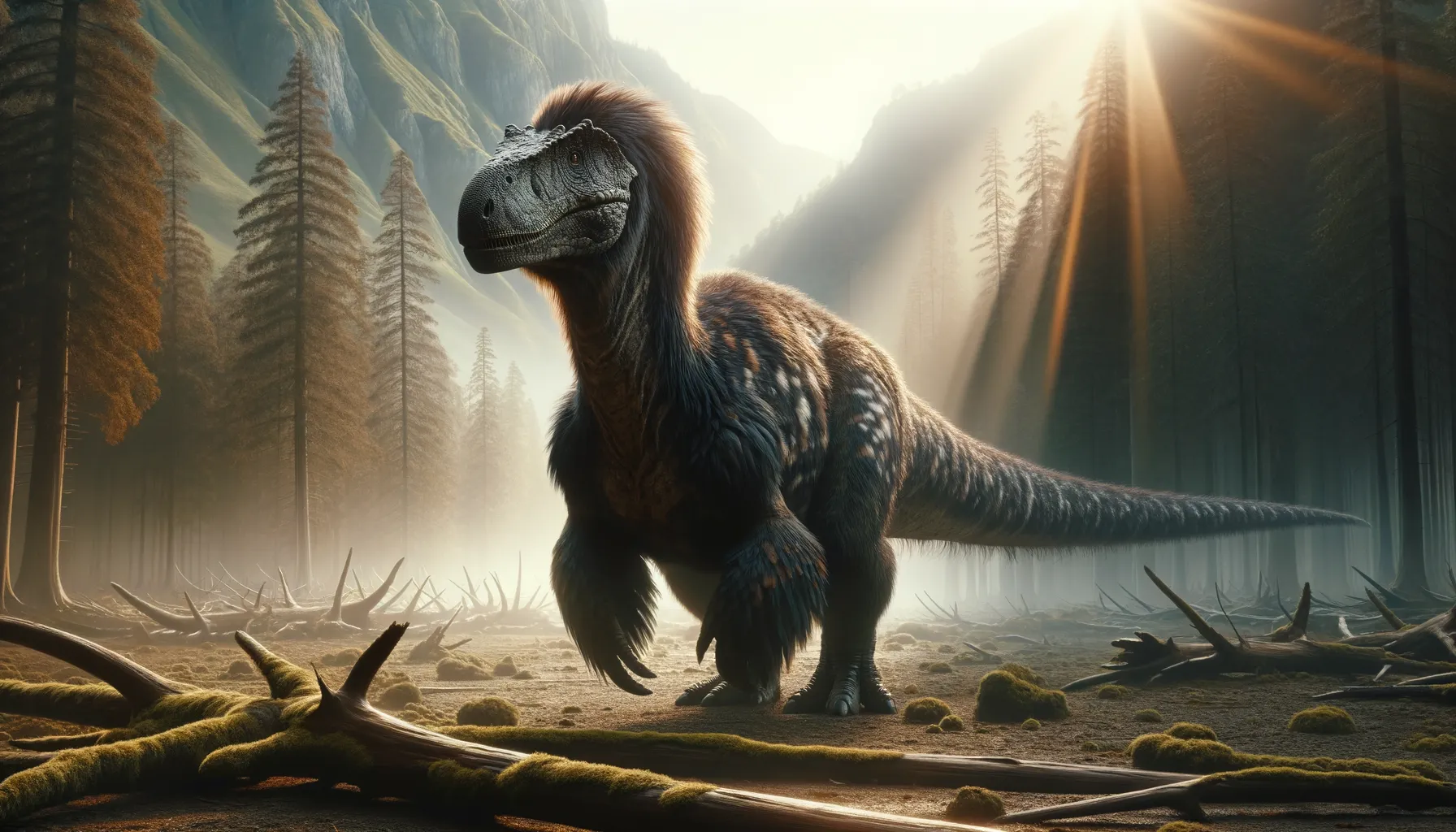
Yutyrannus
Discover the Feathered Tyrant.
Period
Cretaceous
Length
Approximately 30 feet long from head to tail.
Height
Around 9 feet tall at the hips.
Weight
Roughly 1.5 tons, similar to a car.
Yutyrannus, meaning 'feathered tyrant,' is known for being one of the largest feathered dinosaurs discovered to date. It roamed the early Cretaceous period, offering a fascinating glimpse into the evolutionary transition between smaller feathered dinosaurs and larger tyrannosaurids, possibly sporting a dark, mottled appearance for camouflage within its environment. Its thick coat suggests adaptation to cooler climates, defying the typical depiction of its kind as scaly predators.
Diet
Yutyrannus was carnivorous, primarily feeding on other dinosaurs and possibly scavenging. Its diet would have included any smaller creatures it could overpower.
Hunting
Its hunting strategy likely involved ambush, using its powerful legs to deliver a swift charge towards its prey. Given its size, it might have hunted in pairs or small groups to increase success rates.
Environmental challenges
Living in a cooler climate meant Yutyrannus faced the challenge of maintaining its body temperature. The presence of feathers suggests it used them as insulation against the cold. Other challenges included finding sufficient prey in a climate that wasn't as lush or warm as other regions inhabited by dinosaurs.
Speed
Yutyrannus was relatively slow, moving at a speed akin to a quick walk or jog.
Lifespan
Estimated between 20 to 30 years in the wild.
First discovery
Discovered in 2012 in Liaoning Province, China.
Fun Facts
- Yutyrannus is one of the largest known dinosaurs to have feathers, showcasing that even large theropods could be fluffy!
- This dinosaur lived during the early Cretaceous period, about 125 million years ago, adding to our understanding of prehistoric ecosystems.
- The name 'Yutyrannus' means 'feathered tyrant', highlighting its impressive size and its bird-like features.
- Yutyrannus fossils were discovered in Liaoning Province in northeastern China, a region famous for its rich deposits of feathered dinosaur fossils.
- Despite its fearsome appearance, Yutyrannus shared features with modern birds, making it an important link in the evolutionary chain.
- Three remarkably well-preserved Yutyrannus specimens were found together, suggesting they may have lived in social groups.
- The discovery of Yutyrannus supports the theory that some large theropods had insulation to keep warm in cooler climates.
Growth and Development
Yutyrannus hatchlings were likely covered in downy feathers from birth. They grew rapidly, relying on high protein diets. The growth involved developing strong bones and muscles essential for supporting their massive frames.
Habitat
Yutyrannus lived in a temperate but cooler environment with dense forests and open fields. It adapted to varying terrains, indicating a versatile habitat preference. Seasonal changes would have affected food availability and migration patterns.
Interaction with other species
Yutyrannus had to coexist with other large dinosaurs, both predators and herbivores. Competition for resources would have led to occasional conflicts. It likely preyed upon smaller dinosaurs and scavenged on carcasses left by larger predators.
Natural lifespan
In the wild, Yutyrannus could live for 20 to 30 years.
Reproduction
Yutyrannus likely laid eggs in nests constructed on the ground. Parental care was possible, as suggested by modern bird relatives, ensuring hatchlings' survival in a harsh climate.
Social behaviour
Yutyrannus may have displayed some social behavior, possibly living in small groups or family units. This could have facilitated cooperative hunting or protection against other large predators.
Fossil locations
Yutyrannus fossils have primarily been found in Liaoning Province, China. The area is known for its well-preserved feathered dinosaur fossils. Multiple specimens from this region indicate a strong presence during its time period.
